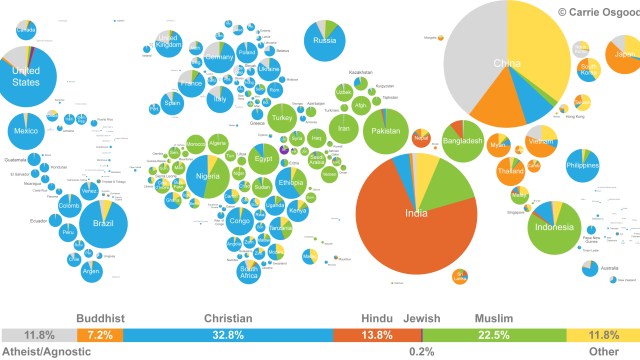This Is Why The Multiverse Must Exist

If you accept cosmic inflation and quantum physics, there’s no way out. The Multiverse is real.
Look out at the Universe all you want, with arbitrarily powerful technology, and you’ll never find an edge. Space goes on as far as we can see, and everywhere we look we see the same things: matter and radiation. In all directions, we find the same telltale signs of an expanding Universe: the leftover radiation from a hot, dense state; galaxies that evolve in size, mass, and number; elements that change abundances as stars live and die.
But what lies beyond our observable Universe? Is there an abyss of nothingness beyond the light signals that could possibly reach us since the Big Bang? Is there just more Universe like our own, out there past our observational limits? Or is there a Multiverse, mysterious in nature and forever unable to be seen?
Unless there’s something seriously wrong with our understanding of the Universe, the Multiverse must be the answer. Here’s why.

The Multiverse is an extremely controversial idea, but at its core it’s a very simple concept. Just as the Earth doesn’t occupy a special position in the Universe, nor does the Sun, the Milky Way, or any other location, the Multiverse goes a step farther and claims that there’s nothing special about the entire visible Universe.
The Multiverse is the idea that our Universe, and all that’s contained within it, is just one small part of a larger structure. This larger entity encapsulates our observable Universe as a small part of a larger Universe that extends beyond the limits of our observations. That entire structure — the unobservable Universe — may itself be part of a larger spacetime that includes many other, disconnected Universes, which may or may not be similar to the Universe we inhabit.

If this is the idea of the Multiverse, I can understand your skepticism at the notion that we could somehow know whether it does or doesn’t exist. After all, physics and astronomy are sciences that rely on measurable, experimental, or otherwise observational confirmation. If we are looking for evidence of something that exists outside of our visible Universe and leaves no trace within it, it seems that the idea of a Multiverse is fundamentally untestable.
But there are all sorts of things that we cannot observe that we know must be true. Decades before we directly detected gravitational waves, we knew that they must exist, because we observed their effects. Binary pulsars — spinning neutron stars orbiting around one another — were observed to have their revolutionary periods shorten. Something must be carrying energy away, and that thing was consistent with the predictions of gravitational waves.
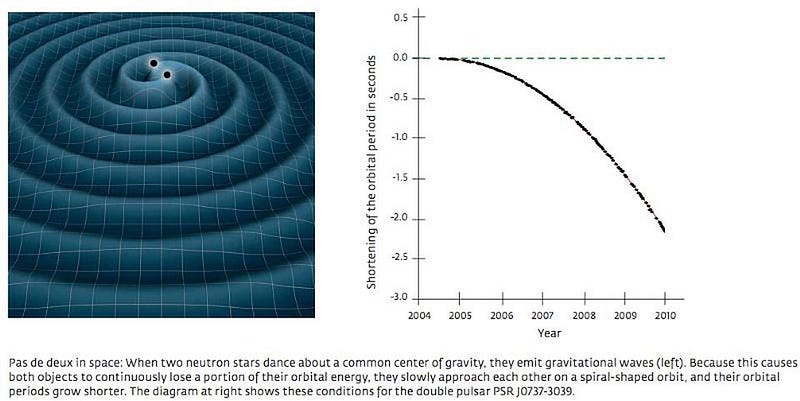
While we certainly welcomed the confirmation that LIGO and Virgo provided for gravitational waves via direct detection, we already knew that they needed to exist because of this indirect evidence. Those who would argue that indirect evidence is no indicator of gravitational waves might still be unconvinced that binary pulsars emit them; LIGO and Virgo didn’t see the gravitational waves that came from the binary pulsars we’ve observed.
So if we cannot observe the Multiverse directly, what indirect evidence do we have for its existence? How do we know that there’s more unobservable Universe beyond the part we can observe, and how do we know that what we call our Universe is likely just one of many embedded in the Multiverse?
We look to the Universe itself, and draw conclusions about its nature based on what observations about it reveal.
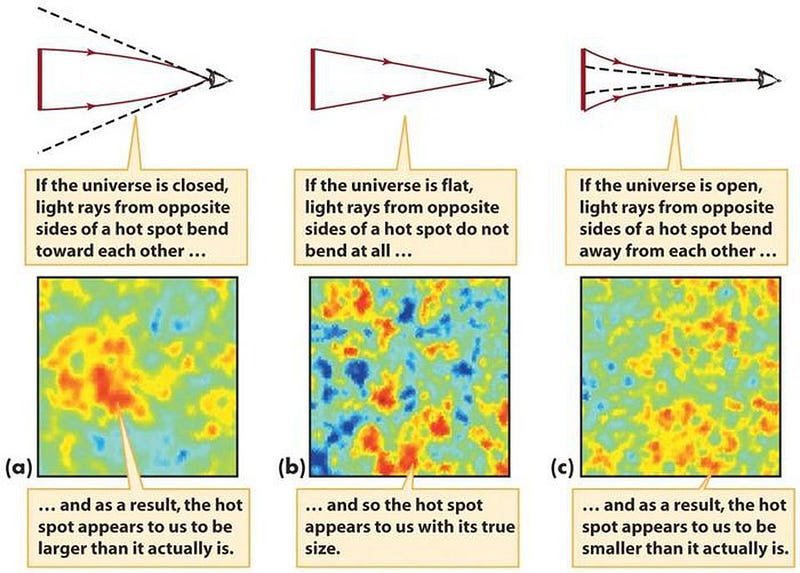
When we look out to the edge of the observable Universe, we find that the light rays emitted from the earliest times — from the Cosmic Microwave Background — make particular patterns on the sky. These patterns not only reveal the density and temperature fluctuations that the Universe was born with, as well as the matter and energy composition of the Universe, but also the geometry of space itself.
We can conclude from this that space isn’t positively curved (like a sphere) or negatively curved (like a saddle), but rather spatially flat, indicating that the unobservable Universe likely extends far beyond the part we can access. It never curves back on itself, it never repeats, and it has no empty gaps in it. If it is curved, it has a diameter that’s hundreds of times greater than the part we can see.
With every second that ticks by, more Universe, just like our own, is revealed to us, consistent with this picture.
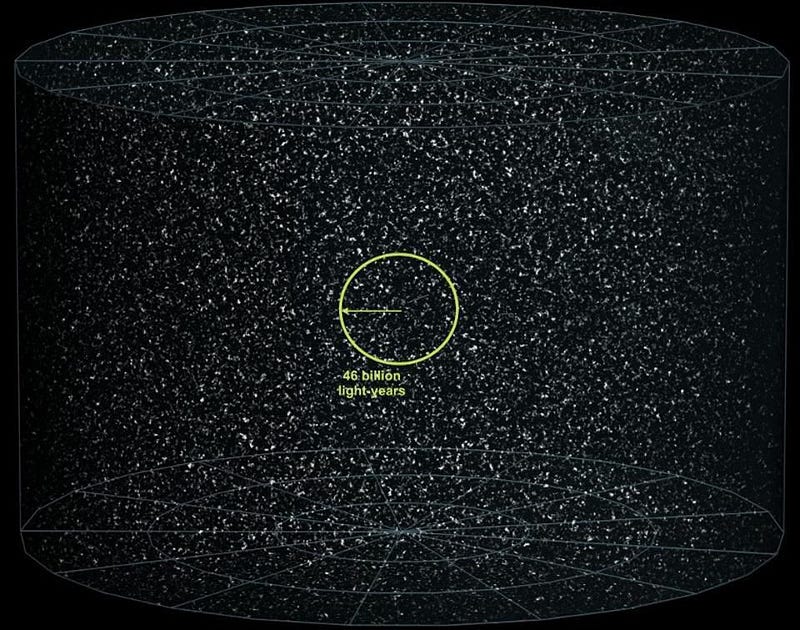
That might indicate that there’s more unobservable Universe beyond the part of our Universe we can access, but it doesn’t prove it, and it doesn’t provide evidence for a Multiverse. There are, however, two concepts in physics that have been established far beyond a reasonable doubt: cosmic inflation and quantum physics.
Cosmic inflation is the theory that gave rise to the hot Big Bang. Rather than beginning with a singularity, there’s a physical limit to how hot and how dense the initial, early stages of our expanding Universe could have reached. If we had achieved arbitrarily high temperatures in the past, there would be clear signatures that aren’t there:
- large-amplitude temperature fluctuations early on,
- seed density fluctuations limited by the scale of the cosmic horizon,
- and leftover, high-energy relics from early times, like magnetic monopoles.
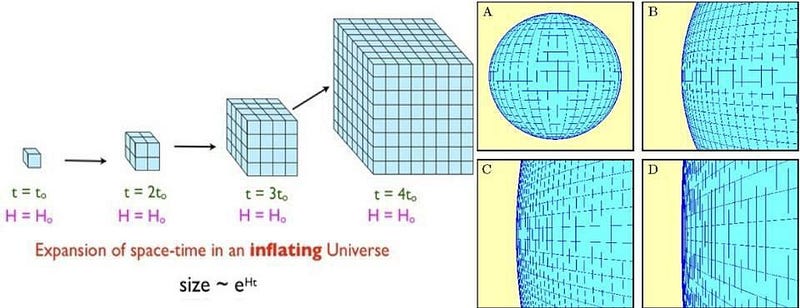
These signatures are all missing. The temperature fluctuations are at the 0.003% level; the density fluctuations exceed the scale of the cosmic horizon; the limits on monopoles and other relics are incredibly stringent. The fact that these signatures aren’t there have an enormous implication to them: the Universe never reached those arbitrarily high temperatures. Something else came before the hot Big Bang to set it up.
That’s where cosmic inflation comes in. Theorized in the early 1980s, it was designed to solve a number of puzzles with the Big Bang, but did what you’d hope for any new physical theory: it made measurable, testable predictions for observable signatures that would appear within our Universe.
We see the predicted lack of spatial curvature; we see an adiabatic nature to the fluctuations the Universe was born with; we’ve detected a spectrum and magnitude of initial fluctuations that jibe with inflation’s predictions; we’ve seen the superhorizon fluctuations that inflation predicts must arise.

We may not know everything about inflation, but we do have a very strong suite of evidence that supports a period in the early Universe where it occurred. It set up and gave rise to the Big Bang, and predicts a set and spectrum of fluctuations that gave rise to the seeds of structure that grew into the cosmic web we observe today. Only inflation, as far as we know, gives us predictions for our Universe that match what we observe.
“So, big deal,” you might say. “You took a small region of space, you allowed inflation to expand it to some very large volume, and our observable, visible Universe is contained within that volume. Even if this is all right, this only tells us that our unobservable Universe extends far beyond the visible part. You haven’t established the Multiverse at all.”
And all of that would be correct. But remember, there’s one more ingredient we need to add in: quantum physics.
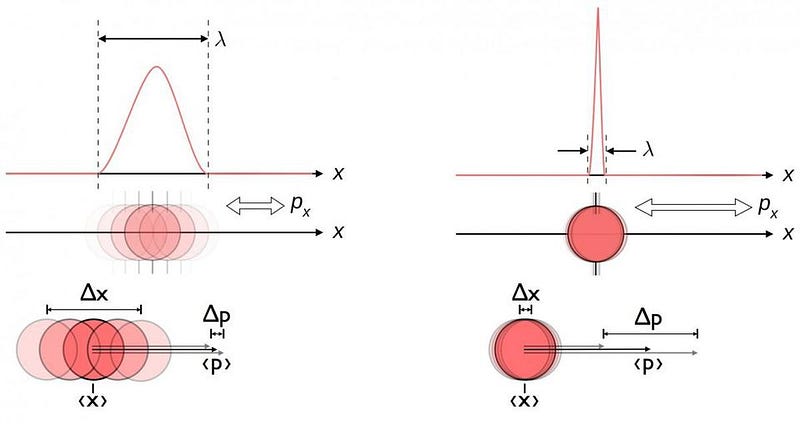
Inflation is treated as a field, like all the quanta we know of in the Universe, obeying the rules of quantum field theory. In the quantum Universe, there are many counterintuitive rules that are obeyed, but the most relevant one for our purposes is the rule governing quantum uncertainty.
While we conventionally view uncertainty as mutually occurring between two variables — momentum and position, energy and time, angular momentum of mutually perpendicular directions, etc. — there’s also an inherent uncertainty in the value of a quantum field. As time marches forward, a field value that was definitive at an earlier time now has a less certain value; you can only ascribe probabilities to it.
In other words, the value of any quantum field spreads out over time.
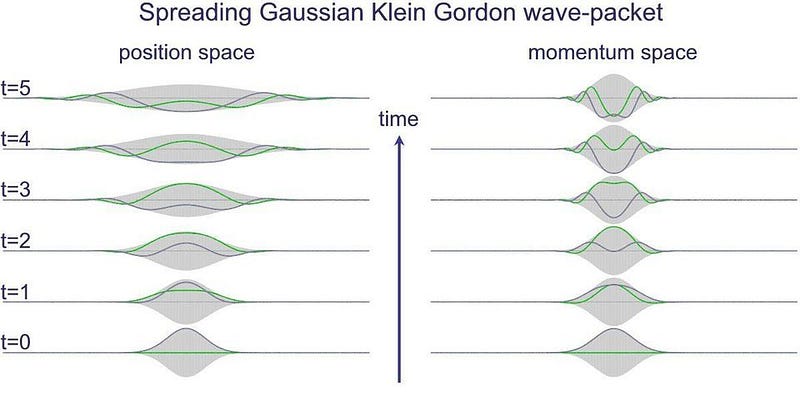
Now, let’s combine this: we have an inflating Universe, on one hand, and quantum physics on the other. We can picture inflation as a ball rolling very slowly on top of a flat hill. So long as the ball remains atop the hill, inflation continues. When the ball reaches the end of the flat part, however, it rolls down into the valley below, which converts the energy from the inflationary field itself into matter and energy.
This conversion signifies the end of cosmic inflation through a process known as reheating, and it gives rise to the hot Big Bang we’re all familiar with. But here’s the thing: when your Universe inflates, the value of the field changes slowly. In different inflating regions, the field value spreads out by randomly different amounts and in different directions. In some regions, inflation ends quickly; in others, it ends more slowly.
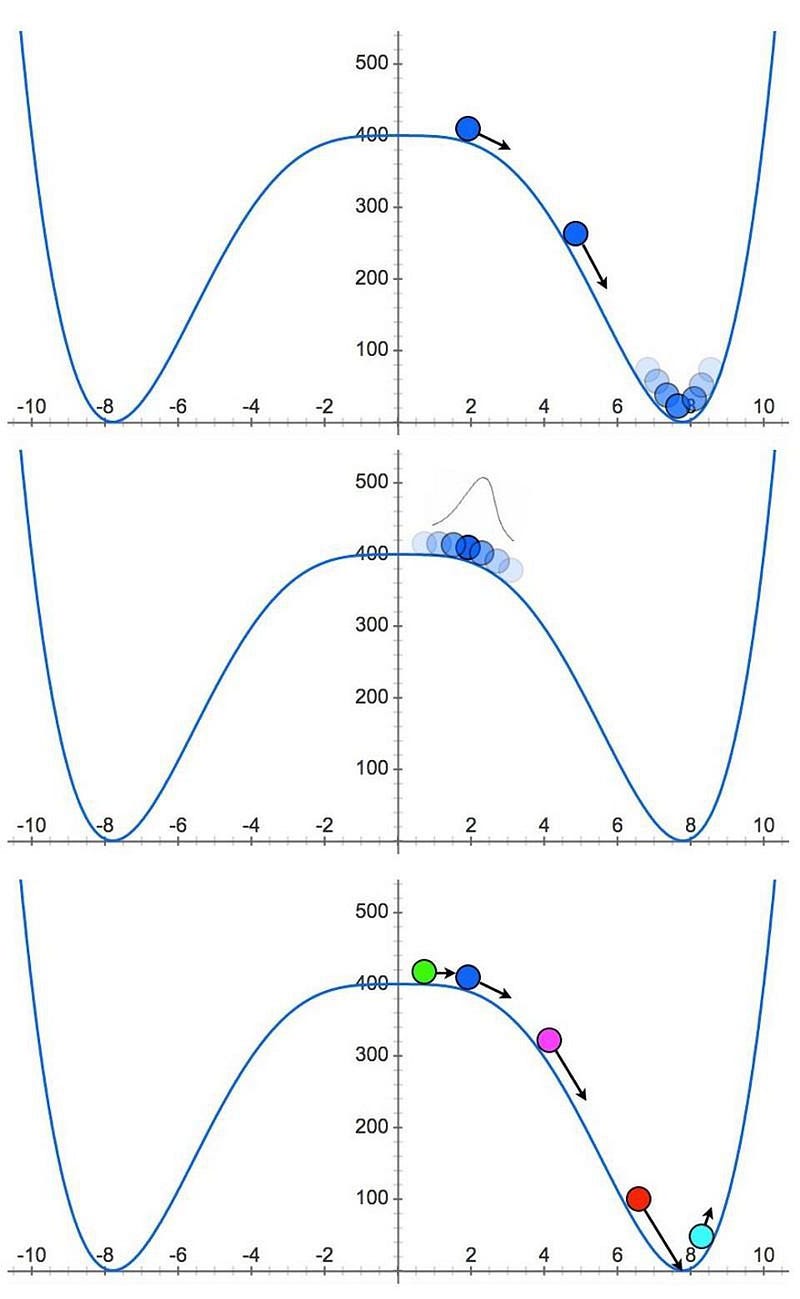
This is the key point that tells us why a Multiverse is inevitable! Where inflation ends right away, we get a hot Big Bang and a large Universe, where a small part of it might be similar to our own observable Universe. But there are other regions, outside of the region where it ends, where inflation continues for longer.
Where the quantum spreading occurs in just the right fashion, inflation might end there, too, giving rise to a hot Big Bang and an even larger Universe, where a small portion might be similar to our observable Universe.
But the other regions aren’t still just inflating, they’re also growing. You can calculate the rate at which the inflating regions grow and compare them to the rate at which new Universes form and hot Big Bangs occur. In all cases where inflation gives you predictions that match the observed Universe, we grow new Universes and newly inflating regions faster than inflation can come to an end.
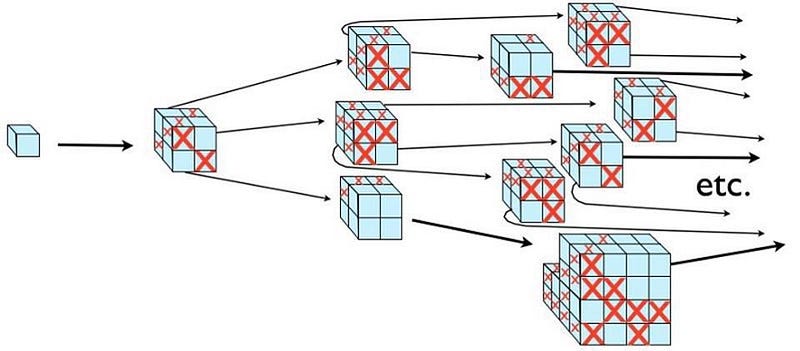
This picture, of huge Universes, far bigger than the meager part that’s observable to us, constantly being created across this exponentially inflating space, is what the Multiverse is all about. It’s not a new, testable scientific prediction, but rather a theoretical consequence that’s unavoidable, based on the laws of physics as they’re understood today. Whether the laws of physics are identical to our own in those other Universes is unknown.

If you have an inflationary Universe that’s governed by quantum physics, a Multiverse is unavoidable. As always, we are collecting as much new, compelling evidence as we can on a continuous basis to better understand the entire cosmos. It may turn out that inflation is wrong, that quantum physics is wrong, or that applying these rules the way we do has some fundamental flaw. But so far, everything adds up. Unless we’ve got something wrong, the Multiverse is inevitable, and the Universe we inhabit is just a minuscule part of it.
Ethan Siegel is the author of Beyond the Galaxy and Treknology. You can pre-order his third book, currently in development: the Encyclopaedia Cosmologica.





